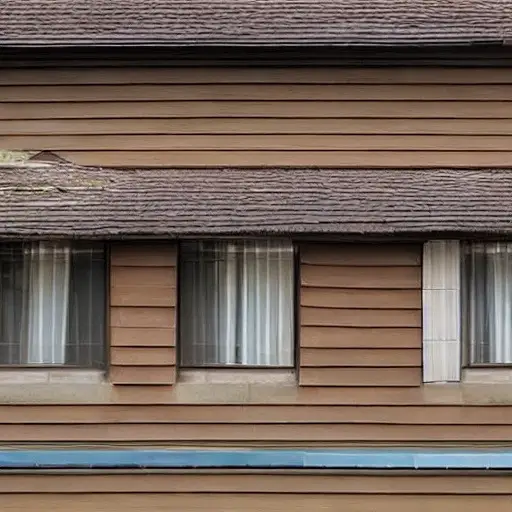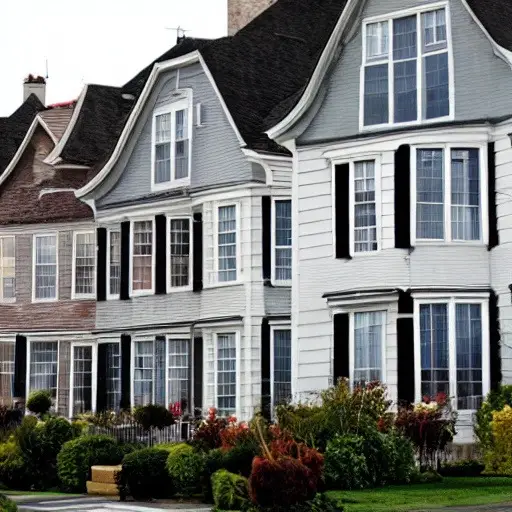When most people think of their house, they don’t expect it to be swaying. However, there are a number of reasons why your house might be swaying.
It could be due to the type of foundation it’s built on, the materials used in construction, or even the location. While it’s normal for your house to have a slight sway, if it’s excessive, it could be a sign of a problem.
Did you know that your house can actually sway? If you live in a newer home, it’s possible. Here are the seven most common reasons for a house to sway.
Why is My House Swaying?
The most common cause of House Swaying is strong winds, which can push against the sides of a house and cause it to move. Another common cause is an earthquake, which can create waves that travel through the ground and cause the foundation of a house to shift. Finally, heavy machinery or vehicles passing by can also create vibrations that cause a house to sway.
What Are Some Signs That My House Is Swaying?
If you live in a newer home, it’s possible that your house sways because of its foundation. If you notice that your house is constantly moving side to side or up and down, it might be due to a problem with your foundation.
What Causes a House Swaying?
There are a number of reasons why a house might sway. The most common reason is due to the foundation it’s built on. If the foundation is weak, the house will sway. Another reason is due to the materials used in construction.
If the house is made from wood, for example, it can warp and cause the house to sway. Finally, location can also play a role in how a house sways. If there’s an earthquake or other seismic event nearby, your house might feel the effects even if it’s not directly affected.
Foundation Problems Cause The House Swaying

If your house is swaying, it may be due to foundation problems. The foundation is what supports your house, and if it is not level, your house may start to lean to one side or the other.
This can cause the house to sway when there is a strong wind or earthquake. If you think your house may be swaying due to foundation problems, you should contact a professional for an inspection.
Poorly Placed Support Posts Cause The House Swaying

The house is swaying because the support posts are not placed properly. The posts need to be placed in a way that will support the house and keep it from swaying.
Also, the posts need to be strong enough to support the weight of the house. If your house is swaying, there is a good chance that the posts are not in place correctly.
Weak Materials Cause The House Swaying
If your house is swaying, it may be due to weak materials. Weak materials can snap in the wind or during an earthquake. This can cause your house to sway significantly. If you think your house may be swaying due to weak materials, you should contact a professional for an inspection.
Poorly Placed Windows Cause The House To Sway

If your windows are poorly placed, they will cause your house to sway in the wind. Windows that are not properly sealed will allow wind and weather inside the home.
This can cause your walls and floors to move and create a lot of noise and movement in the house. If you think your windows might be causing your house to sway, you should contact a professional for an inspection.
Improper framing Causes The House To Sway
Frame defects can cause your walls and roof to sag or flex in the wind, which can then cause the entire house to sway. If you think there might be frame defects causing your house to sway, you should have them checked out by a professional.
Unlevel Pavement Causes The House To Sway
If there is an unlevel portion of pavement next to or near your home, it will cause the foundation of your home to shift and rock in the wind.
This shifting can then cause significant movement within the walls and ceilings of your home. If you live near an unlevel stretch of pavement, you should have it fixed as soon as possible by a professional contractor.
Wrong Location Causes The House To Sway
If your home is located in an incorrect spot on earth, it will start to lean over time because of pressure from other buildings or natural features nearby.
Hollow Interior Walls Cause The House Swaying
If you’ve ever wondered why your house is swaying, it’s likely because of the hollow interior walls. These types of walls are much weaker than solid walls, and they’re more susceptible to movement.
That’s why you’ll often see them used in mobile homes and trailers. If your house has hollow interior walls, there’s not much you can do to stop the swaying. However, you can reinforce the walls with some strategic bracing.
Leaky Roofs Cause The House Swaying
There are a few reasons that your house may be swaying and a leaky roof is one of them. When the rainwater leaks through the roof, it can cause the structure of your house to weaken and eventually lead to the house swaying.
If you think that your roof may be the cause of your house swaying, you should contact a professional to take a look at it as soon as possible.
Excessive Wind Loads Cause The House Swaying
The main reason for the house swaying is due to excessive wind loads. The wind could be blowing at a very high speed and causing the house to sway. Another reason for the house swaying could be due to the foundation of the house being weak.
Seismic Activity Cause The House Swaying
There have been several reports of houses swaying in the past few days, and many people are wondering what could be causing it. Seismic activity is one possible explanation, as there have been a number of small earthquakes in the area recently.
However, it is also possible that the house is simply settling or that strong winds are causing it to sway. If you are concerned about your house swaying, it is best to contact a professional to inspect it and determine the cause.
Natural Swaying of Earth’s Tectonic plates Cause The House Swaying
The natural swaying of the earth’s tectonic plates can cause houses to sway. This is most likely to occur in areas where the plates are shifting or rubbing against each other.
How To Fix House Swaying?
Repairing the foundation or substructure of the house:
If your house is swaying, it’s likely due to damage to the foundation or substructure. Repairing this damage is essential to stabilizing your home and preventing further damage.
Installing a restraining system:
If your home is swaying, it’s likely because it doesn’t have a restraining system installed. Restraining systems are designed to keep homes from moving during high winds or seismic activity.
Without a restraining system, your home is vulnerable to damage from the elements. Installing a restraining system is the best way to protect your home and keep it from swaying.
Counteracting the effects of wind and seismic activity:
There are a number of ways to counteract the effects of wind and seismic activity on your home.
One is to make sure that your home is properly anchored to the foundation. Another is to use hurricane straps or clamps to secure the roof to the walls. Finally, you can install bracing in the walls to help stabilize the structure.
Installing a drainage system:
One potential reason your house may be swaying is a lack of proper drainage. Without a drainage system in place, water can build up around your foundation and cause instability.
If you suspect this is the case, you should contact a professional to assess the situation and recommend a solution.
Conclusion
So what causes a house to sway? It depends on the type and age of the building, as well as how much wind is blowing and how heavy the snow is. But there are some common factors that can affect any home.
It is important to understand the cause of the problem before addressing it. If your house is swaying, it is most likely due to one of three things: wind, an earthquake, or a passing train. Once you know the cause, you can take the necessary steps to fix the problem.

